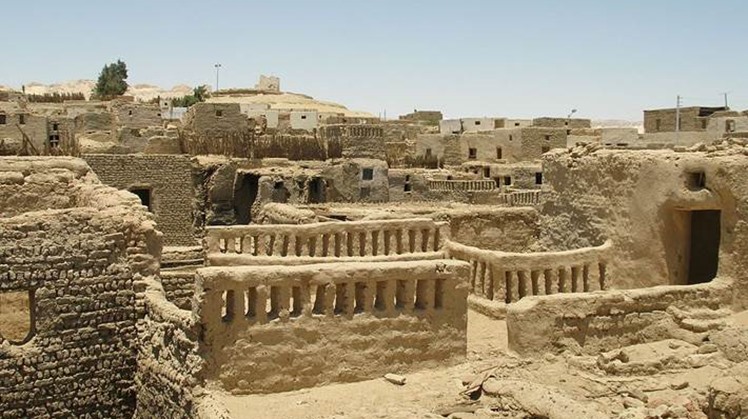The Ministry of Tourism and Antiquities is working on a project to restore the archaeological village of Balat, which is located in the Dakhla Oasis, in cooperation with the New Valley Governorate and the National Service Projects Organization, and recently Dr. Osama Talaat, head of the Islamic, Coptic and Jewish antiquities sector at the Supreme Council of Antiquities, inspected the ongoing restoration project so far, and for this we review The following report crossed the historical background of the village.
Archaeological Balat Village in the Dakhla Oasis, nearly 80% of the architectural and meticulous restoration work has been completed, as it is scheduled to open at the end of next February, and the village is specifically located 35 km to the east of the city of Mut, the center of Dakhla, and it is considered one of the most important Islamic cities. The rest of the oasis in Dakhla, which expresses the true style of Islamic architecture in the oases.
The village is one of the oldest villages with rare Islamic stamps, dating back to the Mamluk era, and the village was named that name in relation to the headquarters of the royal court in the Ottoman era, which was located in Cairo during the Ottoman rule of the country, and it is built with mud bricks and consists of a main street revolving around it called Ring Street The country branches out from it alleys, paths and alleys, and its streets are distinguished by their sheds and sheds, and the proportion of roofed ones exceeds the exposed, in an attempt to overcome the nature of the continental desert climate, which is very cold in winter and very hot in summer.
The history of the city dates back to the Ottoman era for several reasons, for example the architecture of the city and the architectural styles on which the city was built dates back to the Ottoman era, and the city also includes Islamic tiles a group of wooden lintels above the facades of houses engraved with prominent and deep pits, and the oldest date recorded on it is 1163 AH and the latest date is 1253 AH, On acacia wood, which are supplications and Qur’anic verses, sometimes bearing the name of the originator, the name of the lintel maker and the date of construction, Balat City, like the Islamic cities, includes a mill for grinding grain as it is one of the necessities of daily life and the most important of which is in the city of Balat Al-Prince Mill and Abu Yassin Mill.
There are many mosques in the village, which were distributed all over the town, the most prominent of which are the mosques of the midwife, Ain Alam, the house of the mayor’s office, and the Prince mill, and the distribution of mosques in the city was linked to the presence of water springs.
 Mon, Feb. 1, 2021
Mon, Feb. 1, 2021